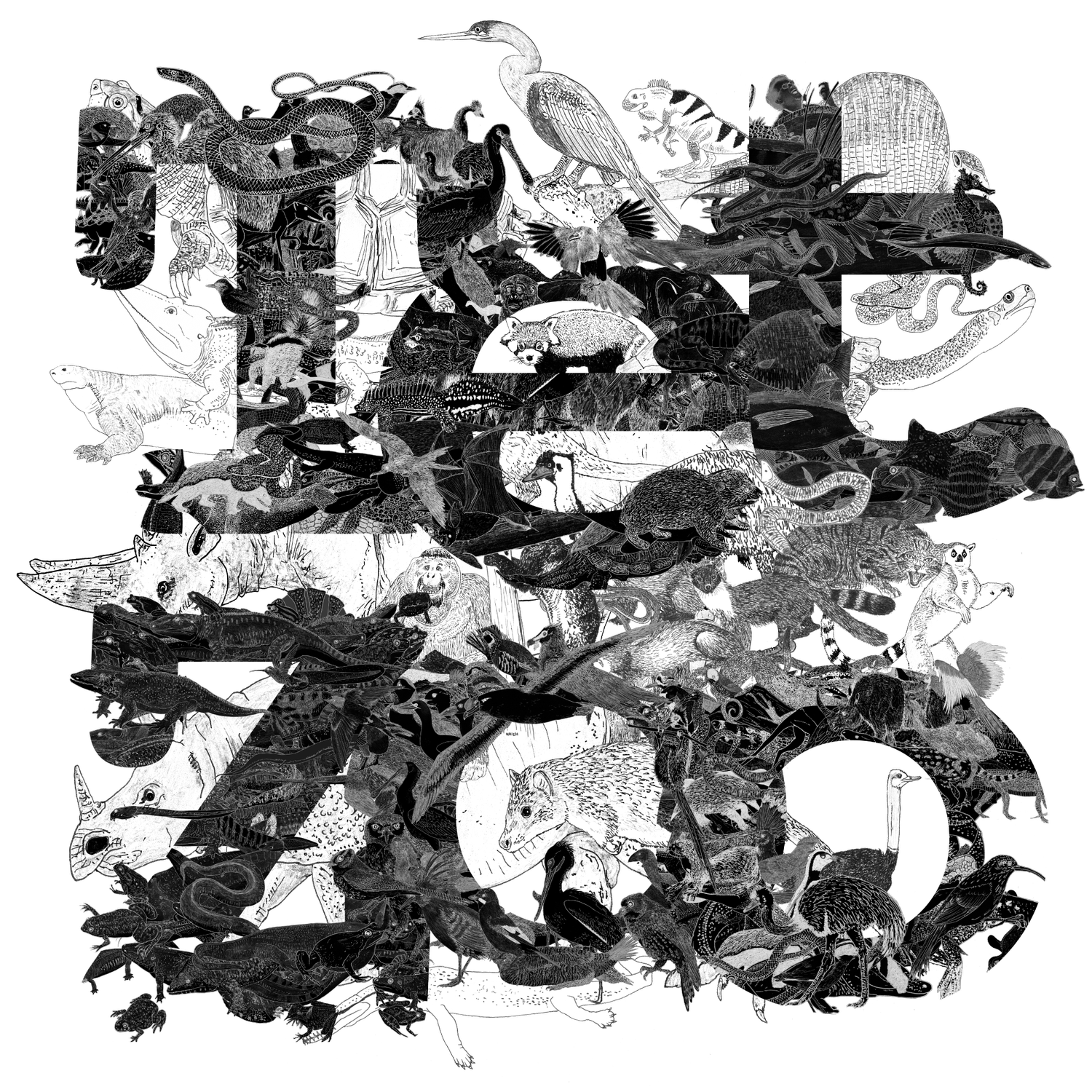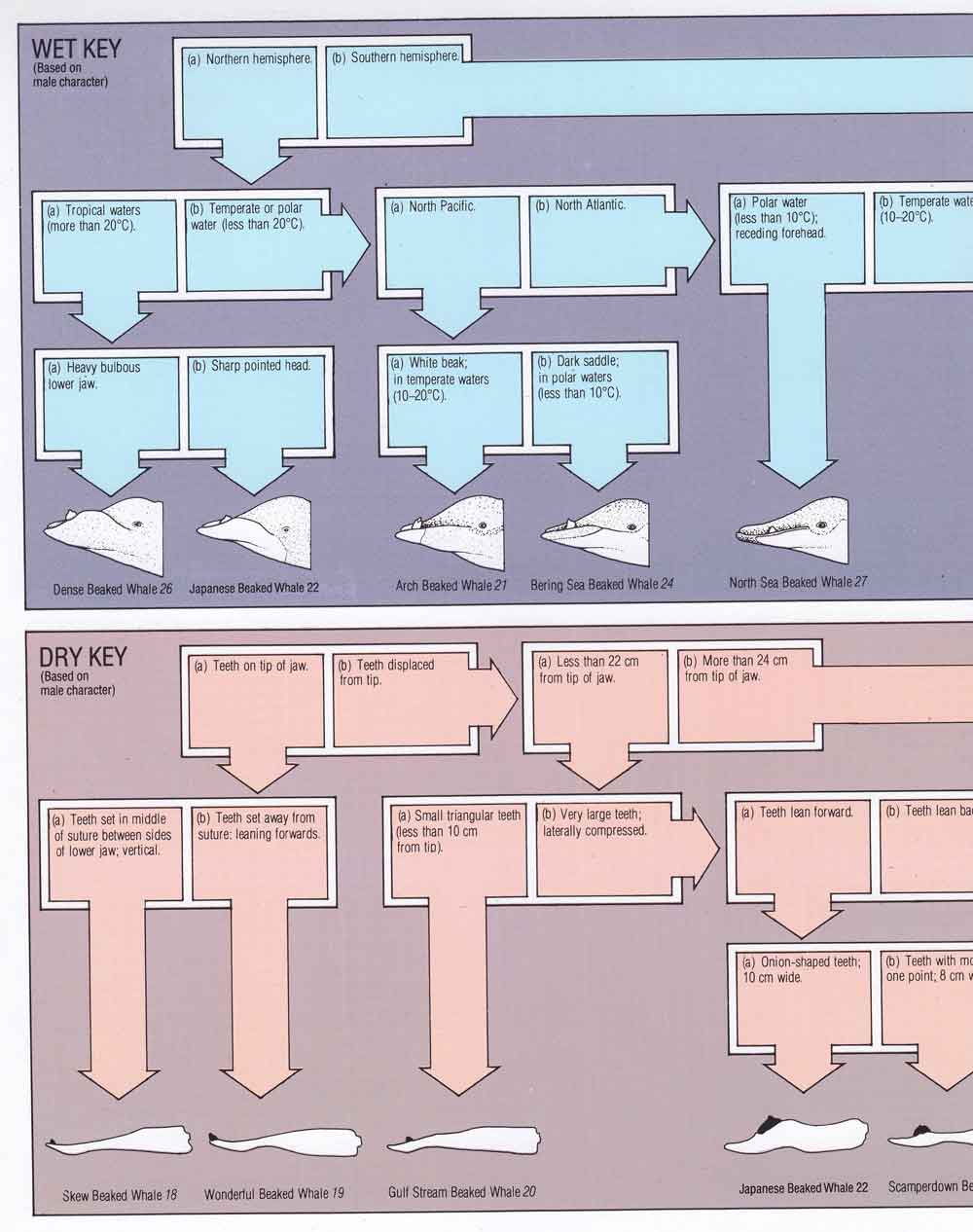It was while going through my read all the books on the whales of the world phase of the early 1990s, I remember, that I first read of the dolphins – members of the highly streamlined, long-beaked, oceanic dolphin group no less – that have such weird features as deep keels, humps on the back and tailstock, and non-streamlined, forward-canted dorsal fins. Yes, we all know that whales are streamlined, torpedo-shaped animals with sensibly shaped appendages, but they’re not all like this. Quite a few species are weird, possessing anatomical specialisations and peculiarities that are counter-intuitive and little discussed, and most likely related to an unusual ecology, physiological regime, feeding strategy or social or sexual life.
Caption: a nice, normal looking group of Spinner dolphins. The obvious dark cape and paler side regions make these look like Hawaiian spinners but they were apparently photographed in the Red Sea. Image: Alexander Vasenin, CC BY-SA 3.0, wikipedia (original here).
In this short series of articles – yeah, this is Part 1 – I want to talk about just a few such animals, and I hope you’ll be as surprised by their anatomy and specialisations as I was when I first learnt about them.
Extreme spinners. Everybody knows that dolphins are streamlined, and the oceanic long-beaked dolphins (those conventionally united in the genus Stenella) are streamlined the most. The Spinner S. longirostris – a species that occurs throughout the tropical and subtropical marine waters of the world – is one such animal, its very long beak, torpedo-shaped body and tailstock and well-proportioned fins all appearing like textbook adaptations for swift movement in the pelagic environment. Yet for all this, some spinner dolphins – some specific individuals belonging to some specific populations – are very odd indeed.
Caption: one of the very best depictions of an ‘extreme’ male Eastern spinner is this one, from Shirahai & Jarrett’s 2006 Whales, Dolphins and Seals. Image: (c) Brett Jarrett.
These animals have arching dorsal humps and massive, bulbous ventral convexities on the tailstock which give them a peculiarly asymmetrical, lumpy appearance, the dorsal fin is not recurved and falcate, but has a straight or even concave anterior margin such that it might even lean forwards, and the tail flukes turn upwards at their outer edges. The exaggerated lump on the lower surface of the tailstock has a name: it’s the post-anal hump. This structure isn’t unique to the Spinner but is also present in other delphinids, like the Delphinus species. It appears to be sexually dimorphic and is especially prominent in mature males (Ngqulana et al. 2017). Perrin & Mesnick (2003) argued that these features - which are variable in spinner populations and most strongly developed in the so-called Eastern and Whitebelly spinners - are linked to testis size and to a polygynous mating system where males need to be highly distinct from their many female consorts, and built to display against, and fight with, other males. In other words, the most ‘extreme’ spinners are the most polygynous.
Caption: adult males differ in appearance across spinner populations, and it seems that the most ‘extreme’ males are those from the most polygynous populations. This diagram (from Perrin & Mesnick 2003) shows - from top to bottom - male Hawaiian, Eastern and ‘whitebelly’ spinners. Image: Perrin & Mesnick (2003).
How and why might this remarkable feature have originated? Spinners and other cetaceans adopt a sinuous, vaguely S-shaped profile when displaying to one another (this has now been seen in diverse cetaceans, mysticetes as well as odontocetes; Helweg et al. 1992, Horback et al. 2010), and one suggestion is that the post-anal hump and a matching convexity on the dorsal surface of the tailstock might serve to accentuate the curves of the S and thereby function in exaggerating this signal. One idea about the S-shaped pose is that it functions in shark mimicry (Norris et al. 1985; some sharks also adopt an S-shaped profile and use it to signal aggressive intentions), but the fact that it’s as widespread in cetaceans as it is – and similar poses are seen in other aquatic vertebrates – indicates that any similarities with non-cetaceans are convergent.
Caption: S-shaped postures, depicted (sometimes schematically) in cetaceans of very different sizes and proportions, from Horback et al. (2010). (A) Spinner dolphin, (B) Beluga, (C) Humpback whale. Evolve dorsal and ventral convexities on the body and tailstock, and you can exaggerate the intensity of this signal. Image: Horback et al. (2010).
Anyway… the features discussed here appear intuitively odd because they’re just about the opposite of what you’d predict to be present in a fast-swimming, pelagic predator which has otherwise evolved to be ultra-streamlined. But there you are.
Caption: humpback dolphins are not especially well known, and even less well known is that they’re kept in captivity in a few places and have been trained to do tricks. This individual was photographed in captivity in Singapore. Image: Tolomea, CC BY 2.0, wikipedia (original here).
The humpback dolphins. Everyone’s heard of the Humpback whale Megaptera novaeangliae, but less well known is that there are dolphins with humps too, perhaps four species of them if you follow some studies of molecular variation within the group (the Indo-Pacific humpback dolphin Sousa chinensis, Australian humpback dolphin S. sahulensis, Atlantic humpback dolphin S. teuszii and Indian Ocean humpback dolphin S. plumbea). Superficially, Sousa dolphins look something like bottlenose dolphins (Tursiops), and like them they’re coastal animals that prey on diverse fishes and cephalopods. Unlike the Tursiops dolphins, the Sousa species have a long raised section – sitting dorsal to the neural spines and musculature of the back – that extends along the middle part of the dorsal surface. The dorsal fin sits on top of this hump.
Caption: comparatively few people know that there are dolphins with humps, but check it out. These are Tom Ritchie’s illustrations of Sousa dolphins, representing adult males identified by Watson (1981) as S. chinensis (above) and S. teuszii (below). Images: Watson 1981.
The function of this hump – if it has one – is not well studied and authors have mostly avoided mentioning the possibility that it might have one. Does it function as a visual or acoustic signal of maturity? Does it have some role in buoyancy, hydrodynamics or streamlining? Is it a fat store? The dorsal fins of at least some cetaceans appear to function as so-called thermal windows: as heat-dumping structures, the large and extensive blood vessels of which carry cooled blood to the body interior (Meagher et al. 2002). In males, this cool blood helps lower the temperature of the deeply internal testes (Pabst et al. 1995), which might otherwise be prone to overheating. The humps of humpbacked dolphins, like the dorsal fins, appear to be richly innervated with blood vessels which again transport cooled blood from the animal’s exterior surface to deep within its body (Plön et al. 2018).
Caption: (A) vasculature in the dorsal fin and hump of a humpback dolphin compared with (B) dorsal fin vasculature in a Tursiops dolphin. The blood vessels in Tursiops are proportionally larger, but there’s a great number of them in the humpback dolphin, thanks to the hump. Image: Plön et al. 2018.
Could the hump therefore be a thermoregulatory specialisation for this mostly tropical group? Further research is needed, but this could be consistent with the fact that the hump is proportionally largest in adult males, and perhaps proportionally largest in those populations that inhabit the most tropical parts of Sousa’s entire range. A hydrodynamic role for the hump remains plausible but has yet to be investigated (Plön et al. 2018).
And that’s where we’ll end things for now. More in this series soon. I’ll publish a lot more on whales here in the future, but here’s some of the stuff that exists in the archives (as always, much of the material at TetZoo versions 2 and 3 has been ruined by the removal of images)…
A 6 ton model, and a baby that puts on 90 kg a day: rorquals part I, October 2006
From cigar to elongated, bloated tadpole: rorquals part II, October 2006
Lunging is expensive, jaws can be noisy, and what’s with the asymmetry? Rorquals part III, October 2006
On identifying a dolphin skull, July 2008 (all images now missing)
Seriously frickin' weird cetacean skulls: Kogia, shark-mouthed horror, July 2008 (all images now missing)
Scaphokogia!, July 2008 (all images now missing)
Cetacean Heresies: How the Chromatic Truthometer Busts the Monochromatic Paradigm, April 2015 (but now lacking all images)
Whale Watching in the Bay of Biscay, August 2019
Refs - -
Helweg, D. A., Bauer, G. B. & Herman, L. M. 1992. Observations of an S-shaped posture in humpback whales (Megaptera novaeangliae). Aquatic Mammals 18.3, 74-78.
Horback, K. M., Friedman, W. R. & Johnson, C. M. 2010. The occurrence and context of S-posture display by captive belugas (Delphinapterus leucas). International Journal of Comparative Psychology 23, 689-700.
Meagher, E. M., McLellan, W. A., Westgate, A. J., Wells, R. S., Frierson, D. Jr. & Pabst, D. A.. 2002. The relationship between heat flow and vasculature in the dorsal fin of wild bottlenose dolphins Tursiops truncatus. Journal of Experimental Biology 205, 3475-3486.
Pabst, D. A., Rommel, S. A., McLellan, W. A., Williams, T. M. & Rowles, T. K. 1995. Thermoregulation of the intra-abdominal testes of the bottlenose dolphin (Tursiops truncatus) during exercise. Journal of Experimental Biology 198, 221-226.
Norris, K. S., Wursig, B., Wells, R. S., Wursig, M., Brownlee, S. M., Johnson, C. & Solow, J. 1985. Behavior of the Hawaiian spinner dolphin, Stenella longirostris. National Marine Fisheries Service Administrative Report LJ-85-06C.
Ngqulana, S. G., Hofmeyr, G. J. G. & Plön, S. 2017. Sexual dimorphism in long-beaked common dolphins (Delphinus capensis) from KwaZulu-Natal, South Africa. Journal of Mammalogy 98, 1389-1399.
Perrin, W. F. & Mesnick, S. L. 2003. Sexual ecology of the Spinner dolphin, Stenella longirostris: geographic variation in mating system. Marine Mammal Science 19, 462-483.
Plön, S., Frainer, G., Wedderburn-Maxwell, A., Cliff, G. & Huggenberger, S. 2018. Dorsal fin and hump vascular anatomy in the Indo-Pacific humpback dolphin (Sousa plumbea) and the Indo-Pacific bottlenose dolphin (Tursiops aduncus). Marine Mammal Science 35, 684-695.




































